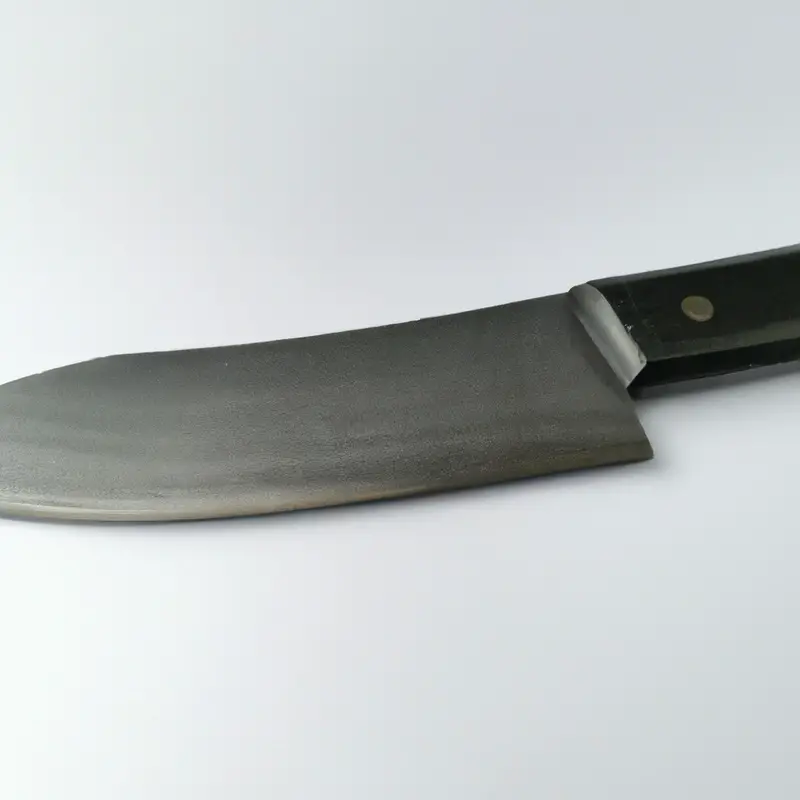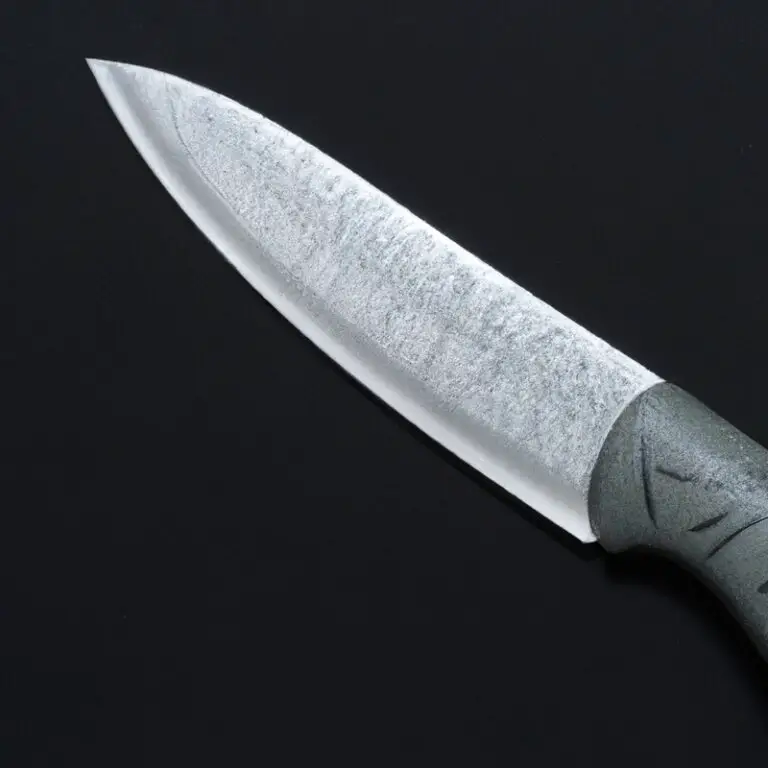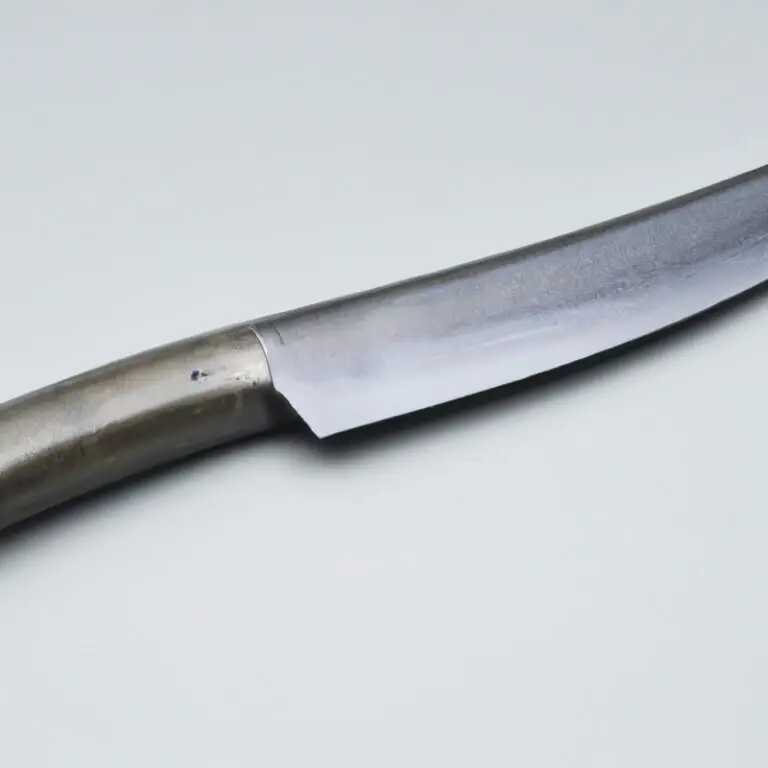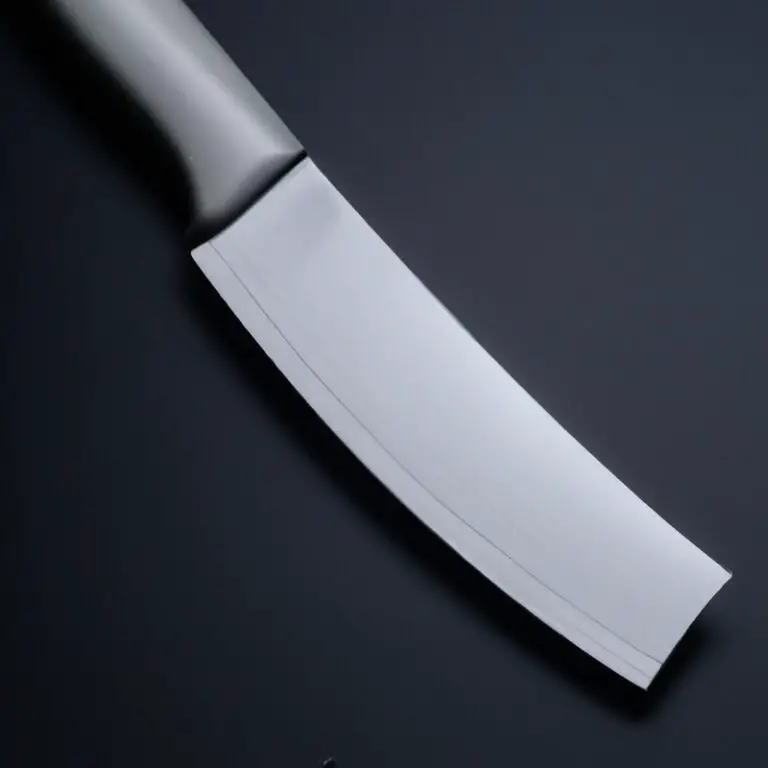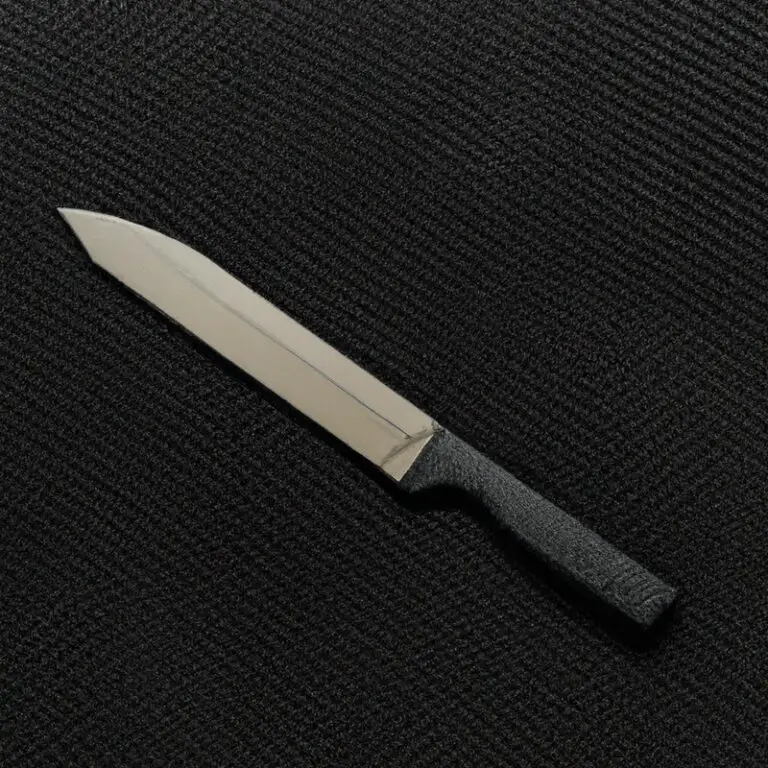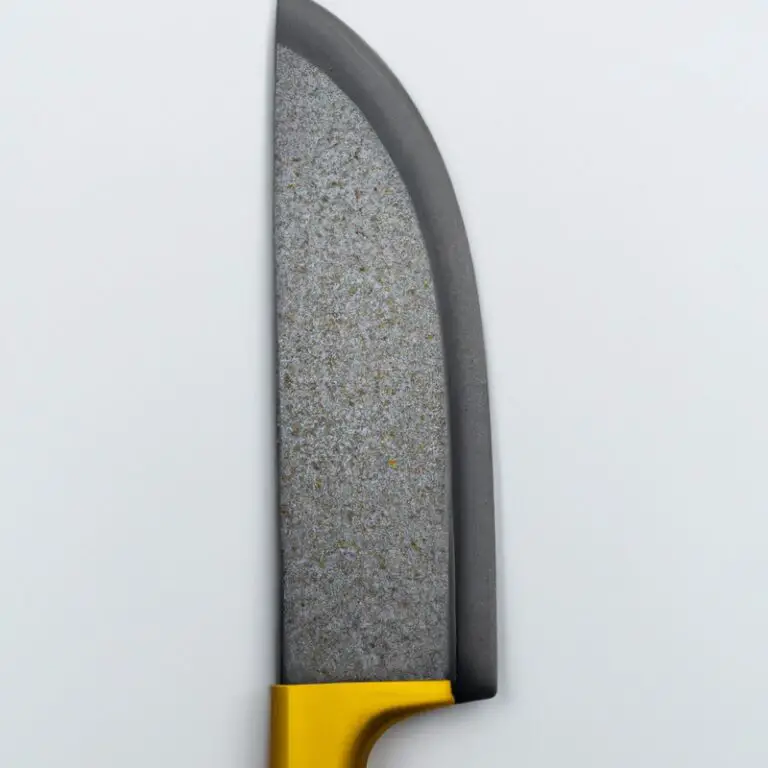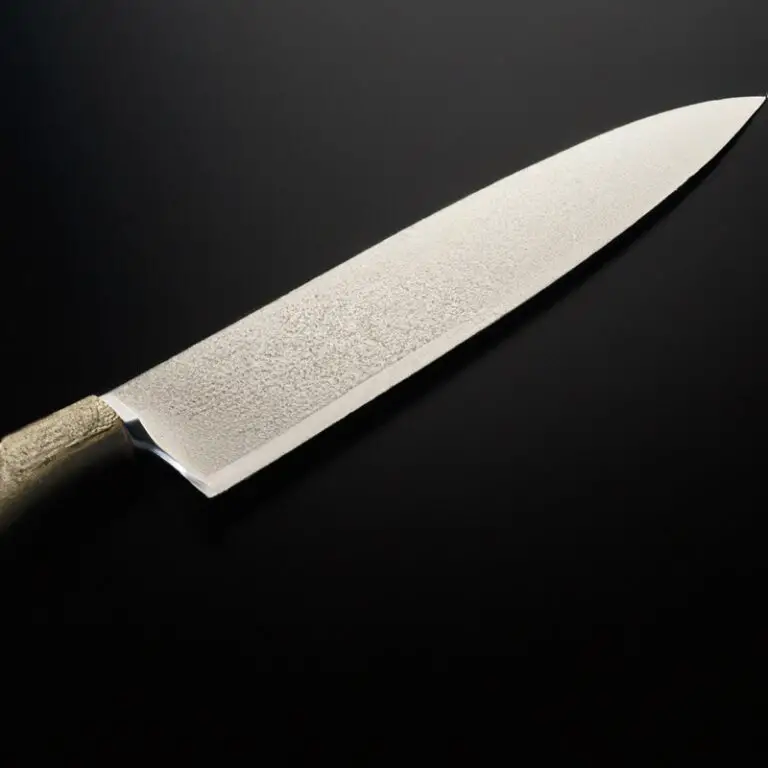How To Achieve Clean And Straight Slices With a Gyuto Knife? Slice Like a Pro!
Key Takeaways:
- The key to achieving clean and straight slices with a Gyuto knife is selecting the right knife, maintaining a sharp edge, and using proper cutting techniques.
- Practice and patience are necessary to master the art of slicing with a Gyuto knife.
- Avoid placing too much pressure on the blade and invest in a good cutting board to prevent damaging the knife’s edge.
- Consistency in slicing thickness can be achieved by marking the food beforehand or using a slicing guide.
Are you tired of uneven and messy slices while prepping food with a Gyuto knife? Look no further! In this article, I’ll show you how to achieve clean and straight cuts like a pro.
As an experienced chef, I understand the importance of using the right knife and technique to enhance the presentation and taste of your dishes.
From understanding Gyuto knives to honing your skills, I’ll guide you through the process step-by-step. Whether you’re a seasoned cook or just starting, this guide will help you master the art of slicing with a Gyuto knife.
| Step | Description |
|---|---|
| 1 | Make sure your Gyuto knife is sharp |
| 2 | Hold the knife at a 20-degree angle to the cutting board |
| 3 | Use a sawing motion to cut through the food |
| 4 | Apply even pressure to the blade while cutting |
| 5 | Clean the blade between slices to prevent sticking |
Understanding Gyuto knives: An overview of the Japanese Chef’s Knife
Gyuto knives are a type of Japanese chef’s knife that has recently gained popularity in Western kitchens. They have a thinner and sharper blade profile compared to Western-style knives.
Gyuto knives are primarily used for slicing, chopping, and dicing vegetables, herbs, and proteins.
The curved tip of the knife allows for a rocking motion while cutting. Proper grip, angle, and pressure are key to achieving clean and precise slices with a Gyuto knife.
Keeping the knife sharp and well-maintained is crucial for optimal performance.
It is essential to choose the right Gyuto knife for the task and to understand its unique features and benefits. Learning more about Gyuto knives can help improve your culinary skills and take your cooking to the next level.
Choosing the right Gyuto knife for the job: Factors to consider
When choosing the right Gyuto knife, consider the following factors:
- Blade size: A Gyuto knife typically ranges from 7-10 inches in length. Choose a blade size based on the size of the ingredients you usually work with.
- Blade material: High carbon stainless steel is commonly used for Gyuto knives as it is sharp, durable and rust-resistant. However, some may prefer carbon steel for its sharpness and easier sharpening.
- Handle design: Choose a handle that is comfortable and offers a good grip. Some options to consider are western-style handles with a full tang or traditional Japanese handles made of wood.
- Blade design: Some Gyuto knives have a flat blade, while others have a slightly curved blade known as a rocker. Consider the type of cutting tasks you will be doing to choose the best option for your needs.
- Budget: The price of Gyuto knives can vary greatly. Determine a budget beforehand and choose a knife that offers good value for money.
By considering these factors, you can choose the right Gyuto knife that suits your needs and enhances your cutting skills.
Preparing ingredients for clean and straight slices: Techniques to adopt
To achieve clean and straight slices with a Gyuto knife, it is important to prepare your ingredients properly. Here are some techniques to adopt:
- Use a cutting board: A stable and non-slip cutting board is essential for clean and precise cuts.
- Choose the right knife for the job: Select a Gyuto knife that is appropriate for the size and shape of the ingredient you are cutting.
- Place the ingredient securely: Hold the ingredient in place with your non-dominant hand to keep it steady while you cut with your Gyuto knife.
- Use proper cutting motions: Slice with smooth and swift motions, avoiding any sawing or back-and-forth movement.
- Keep your knife sharp: A sharp knife is necessary for clean cuts and prevents crushing or tearing of ingredients.
By following these techniques, you can prepare your ingredients for clean and straight slices with a Gyuto knife.
Developing the proper grip: Key to achieving precision cuts
To achieve clean and straight slices with a Gyuto knife, it is crucial to develop the proper grip. This grip ensures that the knife remains stable and controlled while cutting through different ingredients.
A strong grip improves accuracy and reduces the risk of injuring yourself during use.
To achieve the proper grip, rest your index finger and thumb on the blade’s opposite sides while grasping the handle with your remaining fingers. Make sure your grip is firm but not too tight, as this may cause discomfort and strain.
Practice these techniques while cutting a variety of foods to improve your grip and achieve precision cuts with your Gyuto knife.
Achieving optimal angle and pressure: Tips for honing your skills
Achieving optimal angle and pressure is crucial for honing your cutting skills with a Gyuto knife. To ensure the best results, it’s important to hold your knife at a consistent angle and apply steady pressure throughout the cut.
Here are a few tips to help you improve your technique:
- Use the right angle: The most common angle for a Gyuto knife is between 15 and 20 degrees. However, this can vary depending on the specific knife and the task at hand. Experiment with different angles to find the one that works best for you.
- Apply consistent pressure: Use a steady, even pressure to slice through your ingredients. Avoid using too much force, which can lead to uneven cuts or even injuries.
- Maintain a sharp blade: A dull knife requires more pressure to cut, which can lead to inconsistencies and frustration. Maintain a sharp blade by regularly honing and sharpening your knife.
- Practice, practice, practice: Achieving optimal angle and pressure takes time and practice. Start with softer ingredients like fruits and vegetables and work your way up to tougher cuts of meat.
By following these tips, you can hone your skills and achieve clean, straight slices with your Gyuto knife.
Honing and maintaining your Gyuto knife: Keeping it in prime condition
To keep your Gyuto knife in prime condition, it’s crucial to regularly hone and maintain the blade. Honing your knife involves sharpening the blade’s edge, while maintenance involves keeping the knife clean and rust-free.
Some tips for honing and maintaining your Gyuto knife include:
- Regularly use a honing rod to maintain the blade’s edge and keep it sharp
- Use a whetstone to sharpen the blade when it becomes dull
- Clean the blade after each use with a damp cloth and mild soap
- Dry the blade thoroughly to prevent rusting
- Store the knife in a sheath or on a magnetic strip to protect the blade
By regularly honing and maintaining your Gyuto knife, you can ensure it stays in top condition and continues to produce clean and straight slices.
Mastering the art of knife sharpening: Techniques to keep your Gyuto blade razor sharp
To keep your Gyuto blade razor sharp, you need to master the art of knife sharpening. Here are some techniques to help you achieve the best results:
- Use a sharpening stone: Invest in a good quality sharpening stone, preferably with two sides, a coarse and fine side, and keep it clean.
- Determine the right angle: A 15-20 degree angle is ideal for a Gyuto knife. Use a guide to help you maintain a consistent angle while sharpening.
- Apply pressure evenly: Apply consistent pressure on the blade while sharpening to ensure an even and sharp edge.
- Use proper technique: Start from the heel of the blade and move towards the tip in a smooth motion. Repeat on the other side until the blade is sharp.
- Test for sharpness: Test the knife’s sharpness by slicing through a piece of paper or a tomato. If the blade cuts through smoothly without squishing the tomato, it is sharp and ready to use.
By following these techniques, you can master the art of knife sharpening and keep your Gyuto blade razor sharp for clean and straight slices every time. Remember to also hone your knife regularly to maintain its sharp edge.
Identifying common mistakes: How to avoid them and improve your technique
To achieve clean and straight slices with a Gyuto knife, it’s important to identify and avoid common mistakes. Here are some mistakes to watch out for:
- Holding the knife incorrectly: Make sure to hold the knife with your fingers and thumb firmly gripping the handle and your other hand holding the food item to be sliced. Avoid gripping the blade or holding the handle too tight.
- Incorrect blade angle: The angle at which the blade is held against the food item can greatly affect the outcome of the slice. A 15-degree angle is recommended for precision slicing.
- Uneven pressure: Applying uneven pressure can result in uneven slices or even damage to the food item or knife blade. Use consistent and smooth motions when slicing.
- Dull blade: A dull blade can make slicing more difficult and even dangerous. Keep your blade properly sharpened and hone it before and after each use.
By avoiding these mistakes and practicing good technique, you can improve your slicing skills and achieve clean and straight slices with your Gyuto knife.
Expanding your culinary skills: Utilizing Gyuto knives for various cutting tasks
Expanding your Culinary Skills: Utilizing Gyuto Knives for various Cutting Tasks Gyuto knives are versatile and can be used for various cutting tasks in the kitchen, instead of using different knives for different tasks. They are excellent for slicing meat, poultry, and fish, chopping herbs, vegetables, and fruits, making clean and even cuts, and preparing food quickly and efficiently.
To utilize Gyuto knives to their full potential, it is essential to master the correct grip, angle, and pressure when cutting.
Practicing with different ingredients, experimenting with various techniques, and honing your skills is necessary to develop proficiency. Moreover, keeping your Gyuto knife sharp by honing and maintaining it correctly is essential to achieve precise cuts and to avoid common mistakes.
It is also vital to identify the correct Gyuto knife for the task at hand to get the best results.
Gyuto knives offer an opportunity to expand your culinary skills and improve your cooking experience. Try out different cutting tasks in the kitchen using a Gyuto knife and develop your techniques to become a master chef.
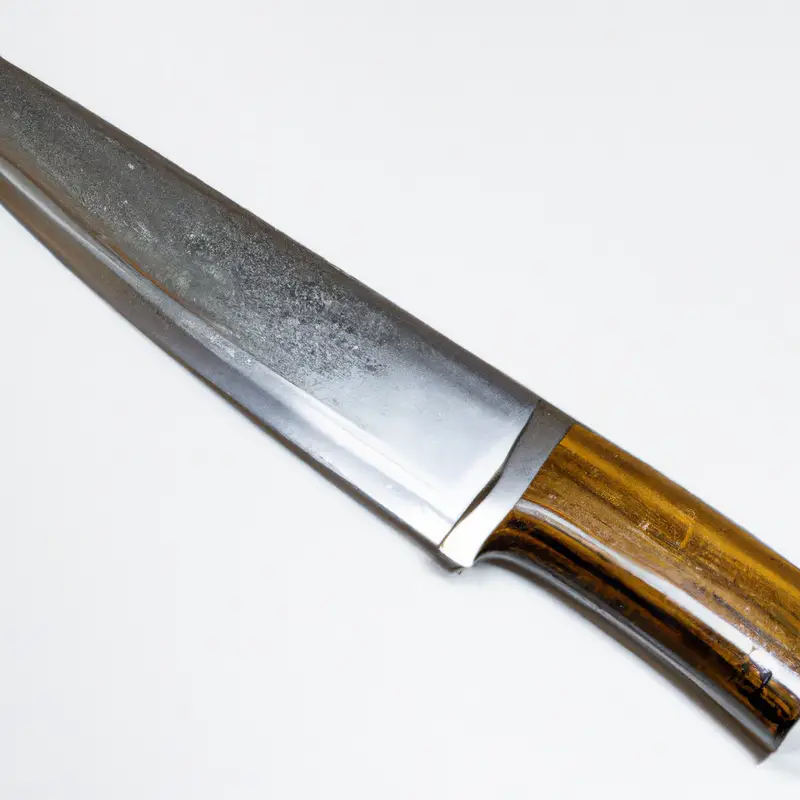
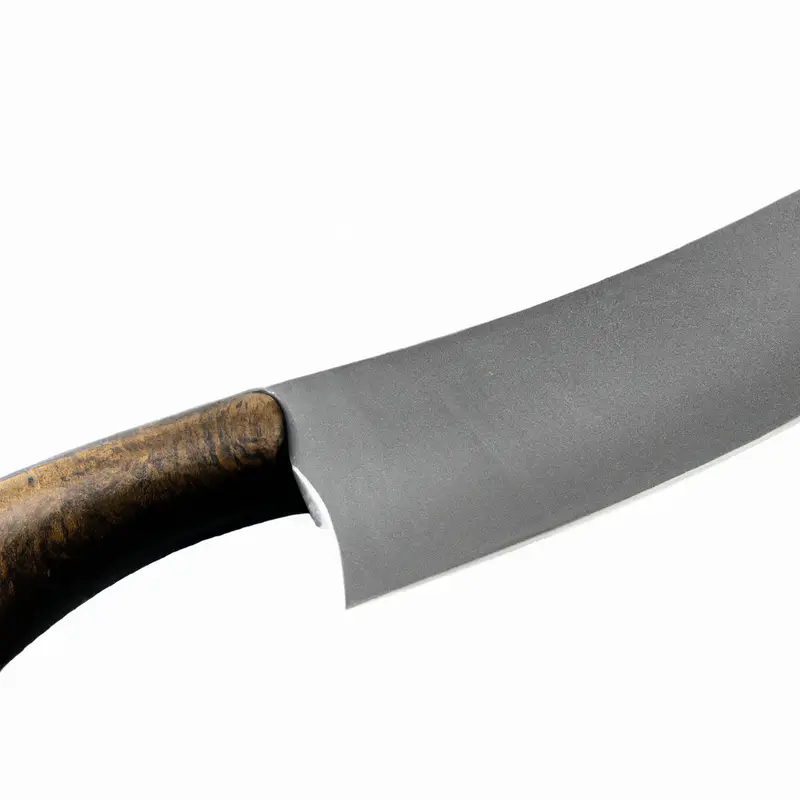
Gyuto knife alternatives: Exploring other Japanese and Western-style knives
While the Gyuto knife is a versatile tool for various cutting tasks, there are other Japanese and Western-style knives you can consider for your kitchen. These alternatives offer their unique features to suit specific cutting needs.
For instance, the Santoku knife is similar to the Gyuto, but its wider blade and shorter length make it suitable for chopping and slicing vegetables.
On the other hand, the Deba knife is specifically designed for filleting fish and poultry. Meanwhile, the Western-style chef’s knife has a curved blade that helps to rock the blade across the cutting board for chopping vegetables and herbs.
Ultimately, your choice of knife will depend on the specific tasks you intend to carry out in the kitchen, so it’s essential to choose wisely, depending on the project at hand.
Final Verdict
Mastering the use of a Gyuto knife takes time, patience, and dedication. With the right techniques and a well-maintained blade, you can achieve clean and precise slices that will take your culinary skills to the next level.
Remember to choose the right knife for the job, develop a proper grip, and pay close attention to angle and pressure.
With practice, you can avoid common mistakes and expand your culinary repertoire with ease. By following the tips and tricks outlined in this article, you can become a master of the Gyuto knife and impress your guests with your culinary prowess.
So go ahead, take up your Gyuto knife, and start chopping like a pro!

